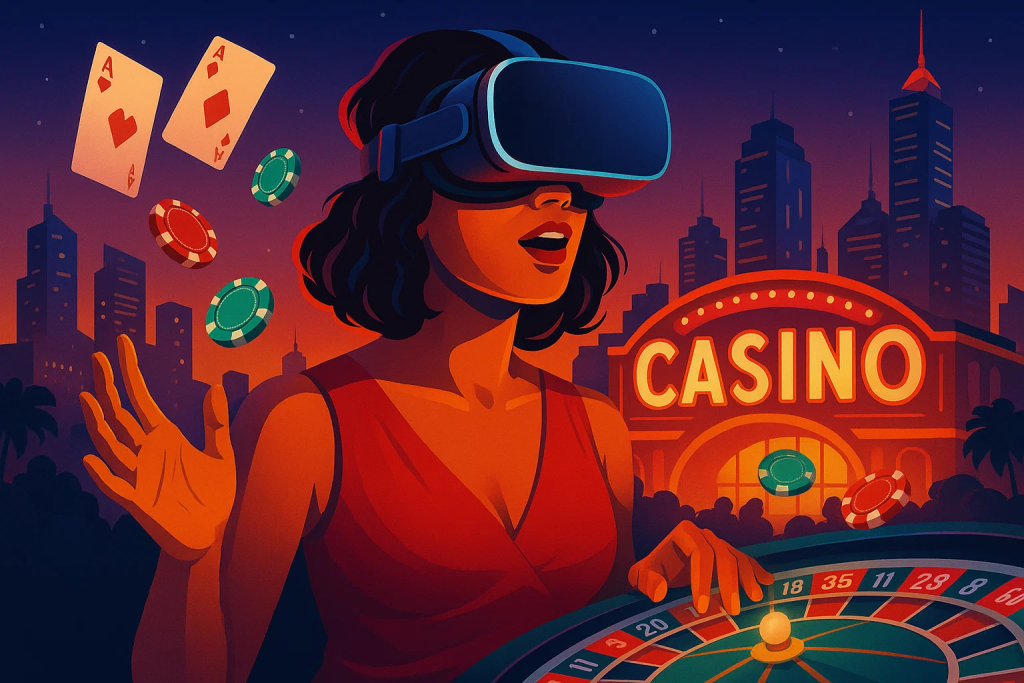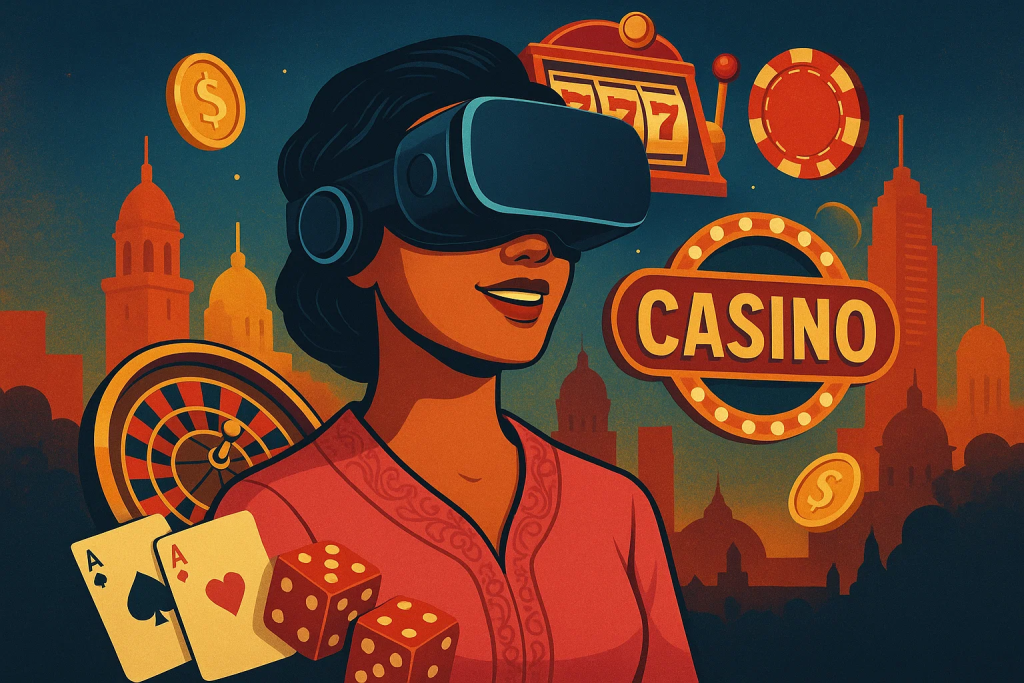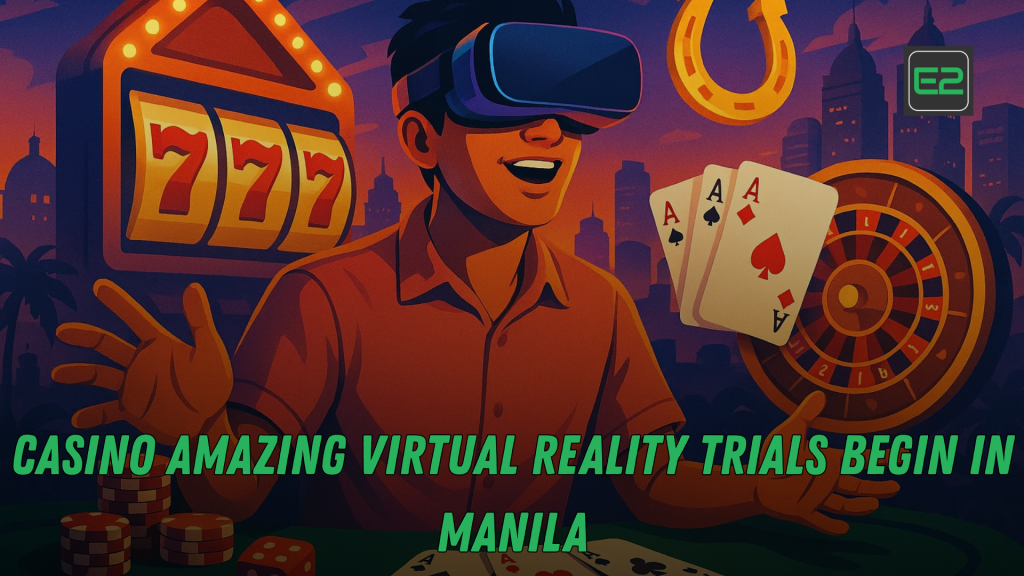Table of Contents
Virtual Reality Trials in Manila’s hospitality and entertainment corridors are famous for reinvention. The newest act arrives inside headset bays, modular stages, and concierge-led lounges where visitors test the boundaries of sight, sound, and shared play. These pilots are not gimmicks. They are disciplined virtual reality trials that let properties validate demand, harden safety protocols, and collect evidence before committing to permanent builds. For readers who lead resorts, studios, schools, brands, or policy desks, this handbook explains how to plan, run, and scale virtual reality trials while protecting guest dignity and Manila’s cultural voice.

Why Manila and why now
The city combines a young, mobile-first population with a seasoned service workforce, resilient creative talent, and improving connectivity. Visitors now hunt for experiences that are novel yet safe, communal yet comfortable, and easy to share without hours of prep. Virtual reality trials provide exactly that: a low-risk, high-learning way to transform underused corners into magnets, upskill staff for spatial computing, and attract a spectrum of audiences—from esports fans to first-time families. The result is differentiation without multi-year construction and a faster path from curiosity to loyalty.
What counts as a trial
A trial can be a single headset in a demo nook, a row of synchronized bays, or an arena that hosts cooperative quests. The defining elements are time-boxed operation, clear hypotheses, and measurable outcomes. In mature programs, virtual reality trials are staged like pop-up worlds: clearly signed queues, friendly onboarding, thoughtful comfort settings, and post-play debriefs. Properties rotate content by season, gather feedback in minutes, and use data to decide whether to scale, redesign, or retire a concept—all while maintaining a warm, human tone that feels like Manila.
The guest journey, designed to delight
A successful visit follows a rhythm: discover, onboard, play, cool down, and remember. Discovery begins online with human reactions—laughter, gasps, and teamwork—not just glossy CGI. At the venue, queues become part of the show: lore walls, short explainers, and staff who answer questions without jargon. Onboarding takes two minutes: fit the headset, calibrate interpupillary distance, pick seated or standing, choose snap-turn or smooth locomotion, and learn the tap-out gesture. During play, attendants stay close enough to help but far enough to preserve immersion. Offboarding includes a gentle cooldown, water, a highlight clip, and a loyalty nudge that suggests the next experience. When properties run virtual reality trials with this rhythm, friction fades and delight compounds.
Hardware, haptics, and hygiene
All-in-one headsets are easy to deploy and maintain, while tethered rigs still win for cinematic graphics and arena-scale tracking. Either option works if the network is stable and the crew understands care and feeding. Haptic vests, bass boards, breeze modules, and subtle scent cues increase presence; start with one or two add-ons so you can measure impact cleanly. The unsung hero is cleanliness: replaceable gaskets, UV boxes, alcohol-free wipes, and visible sanitation cycles build trust with families and VIPs. Well-run virtual reality trials treat hygiene as hospitality, not homework.
Network, latency, and layout
Immersion collapses when frames stutter. Segment headset traffic on a dedicated VLAN, use QoS to prioritize multiplayer packets, and pre-cache assets during queue time. Keep motion-to-photon latency low with updated firmware and consistent frame pacing. On the floor, use soft edging, wide aisles, and clear guardian boundaries. Wheelchair-friendly paths, seating for elders, and quiet hours for neurodivergent guests make virtual reality trials welcoming to people who rarely see themselves invited to tech attractions.
Content that respects chance, skill, and clarity
Design beats spectacle. For newcomers, readable objectives, generous tutorials, and telegraphed boss attacks produce the “I can do this” feeling that leads to repeat visits. For regulars, seasonal challenges, leaderboards, and mastery loops sustain appetite. If you plan to test wagering mechanics in later phases, decouple payment rails during early virtual reality trials and focus first on comfort, fairness, and consent. When randomness exists, audit it; when prizes exist, post odds plainly; and when rewards are purely cosmetic, let guests earn them through skill rather than grind.
Responsible play in immersive contexts
VR amplifies emotion, so programs must amplify care. Before each session, display time caps, optional spend caps, comfort ratings, and content warnings in simple language. During play, gentle nudges signal milestones: twenty minutes elapsed, intensity trending high, or a suggestion to pause. After a limit is reached, fade to a tranquil lobby and offer staff support, water, and alternatives. Training includes compassionate scripts, age-gate checks, and incident-report forms. In mature virtual reality trials, guests describe the experience as both thrilling and respectful of their limits.
Payments, wallets, and loyalty
At pilot stage, keep money flows simple: book a block, redeem points, or add haptics for a flat fee. Over time, integrate resort wallets and verified identity, but do not rush. People come for magic; frictionless checkout is a bonus. Virtual reality trials become loyalty engines when they award practical perks—queue priority, free merch personalization, or early access to content drops—rather than speculative digital trinkets. Utility earns repeat visits; gimmicks burn them.
Staffing and training: the crew makes the magic
A tight team beats a big one. Cross-train a pod that covers tech, UX, safety, and hospitality. Practice fogging fixes, headset swaps, and graceful declines when hairstyles or headwear complicate fitting. Keep scripts friendly and jargon-free, emphasizing comfort choices. Daily standups capture insights; weekly retros log changes. In well-run virtual reality trials, crews celebrate small wins—fast calibration, smooth recoveries, and first-time guest smiles—because morale shows up in metrics.
Marketing that feels human
Lead with faces, not features. Short clips of real guests laughing, focusing, and high-fiving convert better than purely visual teasers. Teach with fifteen-second explainers that demystify controls and comfort settings. Testify with unscripted comments about safety and accessibility. Bundle sessions with dinner, shows, or spa to lift adjacent revenue. Above all, spotlight inclusion: bilingual UI, seated modes, and quiet sessions expand the tent. Marketing improves as virtual reality trials accumulate honest stories to tell.
Accessibility and cultural fit
Manila is multilingual and multigenerational. Offer English and Filipino interfaces, respect symbols and traditions, and include family-friendly tracks for non-gamers. Provide wheelchair-first layouts, adjustable captions, and staff who can signpost sensory load. The most beloved virtual reality trials make newcomers feel smart within five minutes, regardless of age, body, or gaming history. Hospitality is the product.
Legal, audit, and documentation
Compliance thrives on clarity. Keep device inventories, software hashes, and content versions. If a random number generator exists, maintain independent attestations and a plain-language explainer. Log consent flows, data minimization, and accessibility features. When incidents happen, show your fix. Regulators respond well when virtual reality trials present clean evidence: KPIs, safety stats, and change logs that prove continuous improvement.

Economics and ROI
An eight-headset bay can turn a sleepy corner into a magnet. Startup costs include devices, spares, sanitation rigs, haptics, network gear, licenses, and content. Revenues include session fees, bundles, F&B lift, and loyalty-driven return visits. Because the stage is software-defined, content refreshes keep the footprint relevant without major renovation. Virtual reality trials that manage cleaning cycles, tutorials, and throughput can reach payback in quarters, not years, while creating spillover jobs that span art, code, audio, production, safety, and guest delight.
Content pipeline and partnerships
Keep the stage alive: weekly crew picks, monthly challenges tied to Manila’s calendar, quarterly narrative seasons, and crossovers with local musicians, chefs, or designers. Invite universities to pitch micro-experiences; the bay becomes a paid stage for young makers. In return, operators gain fresh stories, and virtual reality trials become a talent incubator that feeds the city’s creative economy.
Health, hygiene, and sustainability
Post-pandemic guests notice cleanliness. Position airflow to reduce fogging without chilling people. Use alcohol-free wipes, UV boxes, and quick-swap face cushions. Recycle packaging, choose rechargeable batteries, and consolidate shipments to limit the footprint. Sustainable operations feel like good manners. When crews frame hygiene and planet-care as hospitality, virtual reality trials gain another layer of trust.
Risk register and resilience
Even great programs hit snags. A firmware patch may introduce tracking drift; a shipment of gaskets may arrive late; a storm may slow rideshares. Rehearse fallback modes: switch to seated scenes, convert bays into photo lounges, or offer a drink while technicians reset. Keep incident templates ready so staff communicate calmly. Publish “what we learned” notes that convert stumbles into trust. Well-handled glitches become stories guests retell with admiration, and they reinforce confidence in virtual reality trials.
Scenarios for scale
When pilots hit targets, expand to team competitions, hybrid concerts, convention demos, and VIP suites where groups customize scenes for celebrations. Because software drives the stage, holidays and partnerships are easy to program. The best virtual reality trials become flexible canvases: family quests by day, skill arenas by night, and collaborative puzzles for corporate retreats on weekdays.
Community impact and jobs
Pilots spark ecosystems. A single bay can support 3D artists, riggers, sound designers, QA testers, accessibility advisors, and video editors. Schools can align short courses to skills that pilots require, so graduates step directly into paid shifts. Manila’s reputation grows as a regional hub for spatial entertainment, drawing conferences and cross-border investments. With thoughtful virtual reality trials, value flows not just to casino floors but into neighborhoods and classrooms.
Visitor’s first-timer guide
Wear light clothing and closed shoes. Avoid heavy meals right beforehand. Glasses wearers can request spacers; those sensitive to motion can start seated with teleport locomotion. Keep knees soft and hands relaxed. Use the tap-out gesture anytime. Hydrate, stretch, and share your highlight reel after. Most importantly, bring a friend; social play turns first sessions into cherished memories and fuels organic advocacy for future virtual reality trials.
Manila flavor and identity
Express place. Use bamboo textures, capiz shell motifs, and jeepney color palettes in virtual lobbies. Commission local musicians for spatial soundtracks. Invite chefs to inspire visual cues that evoke favorite dishes without overwhelming senses. Offer bilingual captions and community nights that spotlight regional languages. Cultural specificity turns good pilots into signature attractions and helps virtual reality trials feel rooted rather than generic.
A ninety-day operator roadmap
Week 1: set objectives and pick a north-star metric. Week 2: choose vendors and content with comfort ratings and safety plans. Weeks 3–4: build the bay, segment the network, and map sanitation flows. Weeks 5–6: hire and train the crew; practice scripts and edge cases. Weeks 7–8: soft-open for staff families and local partners; fix friction. Weeks 9–10: open quietly to the public; emphasize accessibility, responsible play, and simple bundles. Weeks 11–12: run a themed weekend; publish a transparency note about outcomes and next steps. By day ninety, decision makers should have enough evidence to invest with confidence.
For vendors and studios: how to pitch
Lead with guest outcomes and operational ease. List hardware requirements, staffing needs, and cleaning time between groups. Provide a comfort rating, a safety plan, and a five-minute demo. Offer optional loyalty hooks but keep the core loop fun without upsells. The more plug-and-play your proposal feels, the faster operators can slot it into ongoing virtual reality trials.
Ethics and dignity in design
Respect privacy; collect only what you need; protect what you collect; delete what you do not use. Represent diverse bodies and abilities; offer pause and exit at all times. Avoid exploitative loops or manipulative timers. If chance plays a role, disclose it clearly. The highest compliment guests can give an attraction is not just “that was amazing,” but “that felt fair.” Build virtual reality trials that leave people feeling capable, connected, and proud.
Vision: where pilots lead next
Today’s experiments are on-ramps to a new entertainment grammar where guests flow between physical lounges and shared virtual spaces, carrying identity, progress, and perks. Manila can be a lighthouse city for this future if it keeps care over hype, learning over spectacle, and community over quick wins. As partnerships deepen, the city will export not only content but playbooks, training kits, and ethical standards shaped by months of hands-on virtual reality trials.
Tourism and positioning
Seasonal content drops stack into repeat visitation. Weekend travelers bundle spa, rooftop dinners, and an hour of collaborative puzzle worlds into a single property footprint. Airlines and hotels can craft passes that mix immersive sessions with culinary or music events, turning pilots into a citywide story. Over time, Manila shifts from stopover to playground of possibility, and well-reviewed virtual reality trials become the headline reason to visit.
Crisis playbooks and continuous improvement
Even careful systems misbehave. Keep laminated checklists at each bay, from power cycles to mode changes. Practice guest communication in calm, respectful language. Track incident patterns weekly and feed fixes upstream to vendors. Share learnings across properties so the whole district levels up together. Continuous improvement is the quiet superpower behind resilient virtual reality trials.
Measurement frameworks and OKRs
Build a pyramid of metrics. At the base, output: uploads, session counts, device uptime. In the middle, health: retention curves, nausea-free completion, onboarding time, and sanitation cycle time. At the top, impact: repeat visits, F&B lift, hotel bookings tied to sessions, and community jobs created. Translate the pyramid into quarterly OKRs and review them publicly. When everyone can see progress, virtual reality trials evolve from novelty to necessity.
Myths and facts
Myth: guests will only try VR once. Fact: people return when comfort is tailored, content is refreshed, and staff treat them like co-pilots. Myth: hardware is the hardest part. Fact: the crew culture, hygiene rhythm, and content cadence decide outcomes. Myth: regulation blocks innovation. Fact: transparency, documentation, and early walk-throughs invite collaboration and make virtual reality trials a showcase for responsible growth.
Persona playbook and journey mapping
To design experiences that resonate beyond the first novelty hit, start with five archetypes and map a path for each. The first is the Curious Couple on a staycation: they value shared wonder and a photo that feels cinematic. Provide a two-bay corner, seated or standing modes, and a story slice that culminates in a cooperative flourish.

The second is the Barkada Birthday: a group of four to six friends who want momentum, bragging rights, and food nearby. Offer linked bays, playful team scores, and bundle deals that pair play with dinner.
The third is the Corporate Cohort: colleagues who crave a low-risk challenge that sparks conversations. Focus on problem-solving rooms, reliable scheduling, and a host who reads the room.
The fourth is the Solo Explorer: a foodie or shopper who wants one highlight before or after other plans. Keep onboarding snappy, sessions short, and souvenir clips immediate.
The fifth is the Multigenerational Family: grandparents, parents, and kids sharing a short window. Design seated options, readable captions, and a gentle finale everyone can cheer.
For each archetype, define success metrics: smiles per minute observed by staff, time to first confident gesture, willingness to recommend, and likelihood of adding a second activity. Then remove friction: adjust signposting so newcomers do not wonder where to stand, simplify tutorial screens so the core loop appears obvious, and trim technical vocabulary from the script. Finally, choreograph memory.
Casino Resorts Compete with New Philippine Integrated Resorts
A small, well-edited clip delivered within minutes of play works better than a long video a day later. When teams write, rehearse, and refine journeys for these five archetypes, the room feels prepared rather than improvised. That confidence travels: guests tell friends, managers green-light expansions, and creative partners bring their best ideas. Over time, the space becomes more than a novelty stop. It turns into a neighborhood ritual and a calling card for Manila’s hospitality.
Call to action
If you run a venue, reserve one corner and start. If you build content, pitch a micro-experience that shows your signature. If you teach, align a short course to the skills pilots require. If you write policy, walk the floor during soft opens and co-design guardrails. And if you are a guest, invite someone who has never tried VR and let them choose the comfort settings. The era of careful experimentation is here. Build virtual reality trials that honor safety, celebrate culture, and turn curiosity into lasting community joy.
Frequently asked questions
1) What exactly is being tested during virtual reality trials in Manila venues?
Teams validate guest demand, comfort settings, staffing models, cleaning cycles, and business cases—from ticketed attractions to loyalty-linked sessions—before deciding whether to expand or retire a format.
2) Are virtual reality trials comfortable for seniors, first-timers, and people who wear glasses or use mobility aids?
Yes. Concierges offer seated modes, teleport locomotion, hand-holding tutorials, spacers for glasses, and gentle haptics. Guardian boundaries, soft edging, and attentive staff keep play spaces safe, and sessions are intentionally short for newcomers.
3) How do virtual reality trials handle fairness if chance or prizes are involved?
Programs separate wallets from gameplay during pilots, disclose odds plainly, and maintain independent audits for randomness. If experiences are amusement-only, prizes follow posted rules and avoid manipulative difficulty curves.
4) How should operators judge success beyond buzz?
rack repeat-visit rates, nausea-free completion, device uptime, onboarding and sanitation times, F&B lift, and bundle uptake. The strongest signal is return behavior; when first-timers come back within sixty days, your virtual reality trials are working.
5) When do tests become permanent attractions?
After several months of stable metrics, confident crews, positive sentiment, and measurable cross-property lift, leaders can scale bays, commission seasonal content, and integrate virtual reality trials into loyalty tiers and marketing calendars.
